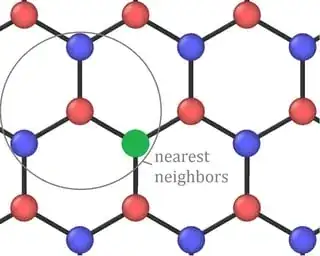Imagine the periodic 2D arrangement of balls in the below figure. The red balls are fixed in the indicated positions, while all other sites have a probability $p$ of having a green ball, and a probability of $1-p$ of containing a blue ball. Let's also assume that the color of the balls for any two positions are statistically independent.
Now define the random variable $X_k$ as the total fraction of red balls that have $k \in \{0,1,2,3\}$ green balls as nearest neighbors. What is the probability distribution of $X_k$ for an arbitrary $k$?
My own thought: So I can easily calculate the probability of a specific red ball having $k$ green balls as nearest neighbors. It simply follows a binomial distribution:
$$\mathbb P (k\text{ green balls as nearest neighbors of a specific red ball})={3 \choose k} p^k (1-p)^{3-k}$$
But I don't know whether this is useful in my main question or not.
Edit: Just to clarify, the "lattice" in the above figure is periodic, so it extends to infinity in all directions. The red balls have deterministic locations with the indicated pattern, while the other sites can randomly be either blue or green.
